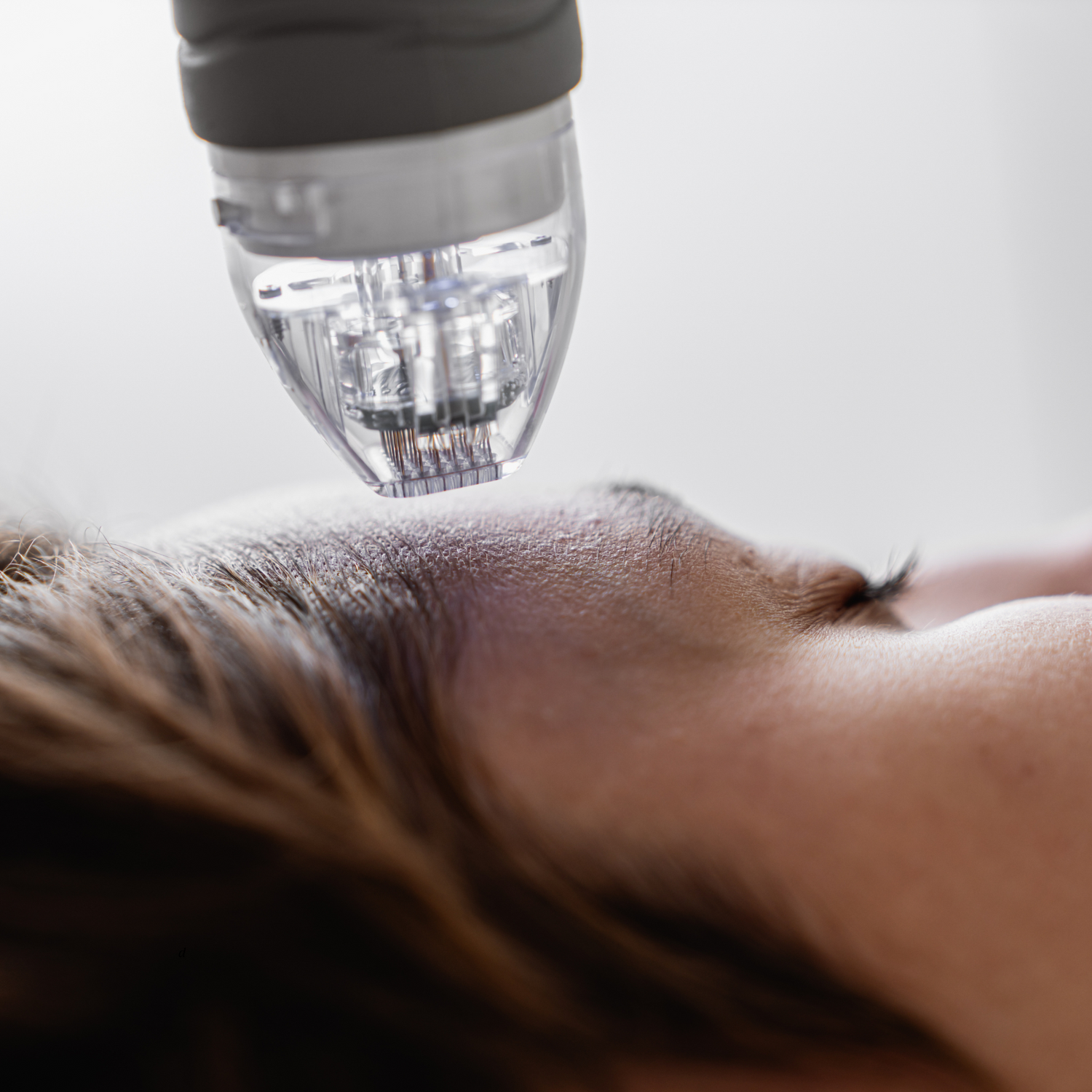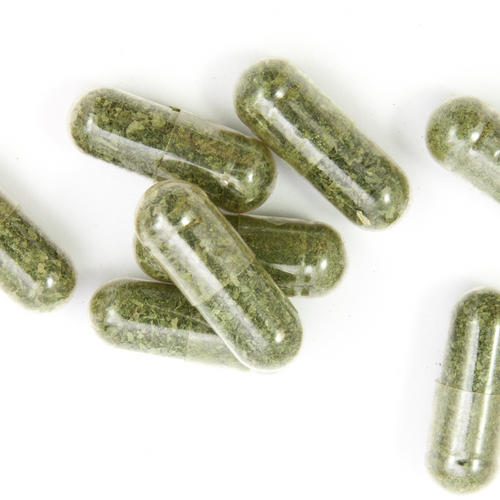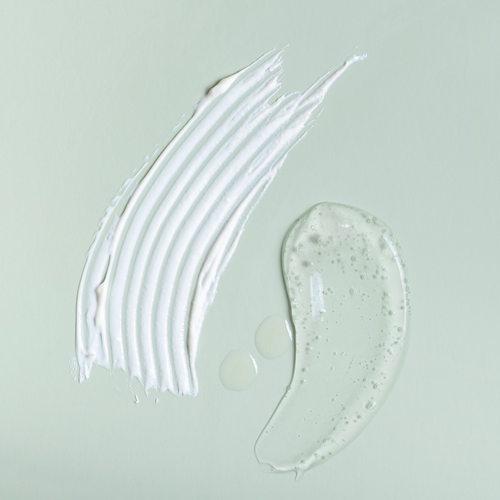What is Microneedling?
Microneedling is a minimally invasive cosmetic procedure designed to improve skin health by using fine needles to create tiny, controlled punctures in the skin. These micro-injuries stimulate the body’s natural healing processes, promoting collagen and elastin production to improve skin texture and appearance. Collagen is essential for maintaining firm, youthful skin, and microneedling is one of the most effective treatments to boost collagen levels.
How Does It Work?
The pinpricks created by microneedling cause micro-injuries to the skin, which trigger the body to produce new, collagen-rich tissue. This fresh tissue is firmer, smoother, and more even in tone and texture. Since collagen naturally decreases with age or due to skin damage, microneedling helps restore firmness and improve overall skin quality. This is particularly beneficial for addressing acne scars, as the treatment encourages collagen remodeling to smooth out uneven skin.
Benefits of Microneedling:
- Reduces Fine Lines and Wrinkles: Smooths the appearance of aging signs by promoting collagen production.
- Improves Skin Texture and Tone: Enhances skin smoothness and evens out discoloration.
- Fades Acne Scars and Hyperpigmentation: Minimizes the appearance of scars and dark spots by stimulating collagen regeneration.
- Addresses Stretch Marks: Improves the look of stretch marks with consistent treatment.
- Boosts Skincare Absorption: Helps skincare products penetrate deeper for enhanced effectiveness, thanks to improved collagen pathways.
Do You Need Microneedling?
Microneedling is ideal for those with persistent or pronounced skin concerns that aren’t easily managed with regular at-home skincare. Here’s when you might consider it:
- Acne Scars or Uneven Texture: For deep or long-standing scars and rough patches, microneedling can effectively smooth and refine the skin’s texture by boosting collagen production.
- Fine Lines or Signs of Aging: If fine lines become noticeable despite anti-aging products, microneedling can enhance collagen production for firmer, smoother skin.
- Enlarged Pores or Hyperpigmentation: For visible pores or stubborn pigmentation that doesn’t improve with exfoliation, microneedling may offer better results by encouraging collagen renewal.
For mild concerns, regular use of products with actives like retinol, AHAs, or niacinamide might be sufficient before opting for professional treatment.
How Frequently Should You Do It?
- Safe Frequency: Every 4-6 weeks.
- Sessions Required for Optimal Results: 3-6 sessions.
- Time to See Results: 3-6 months.
Consistent sessions stimulate collagen production over time, providing noticeable improvements, especially for acne scars and other stubborn skin issues.
When to Avoid Microneedling:
Avoid microneedling if you have:
- Active acne, including whiteheads, pimples, or cystic bumps.
- Blood disorders or are taking blood thinners.
- Cancer and are undergoing chemotherapy or radiation.
- Frequent skin rashes or cold sores.
- Keloid-prone skin or a tendency to form raised scars.
- Abnormal growths, such as moles, freckles, or skin tags.
- Chronic skin conditions like eczema or psoriasis.
Post-Treatment Care
To ensure the best results and avoid complications, follow these aftercare tips:
- Avoid direct sunlight and apply a broad-spectrum SPF 50.
- Keep skin clean; skip makeup and skincare products for 24 hours—rinse with water only.
- Avoid strenuous workouts, saunas, and swimming for at least 48 hours.
- Use gentle, hydrating products and avoid actives like retinol and AHAs for 2-3 days.
- Stay hydrated and avoid alcohol to support healing.
Collagen production continues post-treatment, so sticking to these guidelines ensures optimal results, particularly for concerns like acne scars.
Microneedling vs. MNRF: What’s the Difference?
Microneedling and Microneedling Radiofrequency (MNRF) are advanced skin treatments, but they work differently:
- Microneedling: Uses fine needles to create micro-injuries, stimulating collagen and elastin production.
- MNRF: Combines microneedling with radiofrequency energy to target deeper layers of the skin, providing enhanced tightening and rejuvenation.
Key Differences:
- Depth of Treatment: MNRF penetrates deeper than traditional microneedling, making it ideal for severe acne scars and advanced signs of aging.
- Skin Tightening: MNRF’s radiofrequency component adds skin-tightening benefits.
- Cost: MNRF is typically more expensive due to its advanced technology.
Both treatments have their advantages, and the choice depends on your specific skin concerns. Consult a dermatologist to determine the best option for you.
Does It Hurt?
Microneedling is generally well-tolerated by most people. While the procedure involves tiny needles, a numbing cream is typically applied beforehand to minimize discomfort. You may feel slight pressure or a mild pricking sensation during the session, but it’s usually not painful. The level of discomfort may vary depending on your skin’s sensitivity and the depth of treatment.
Ready to Take the Next Step?
Microneedling is a powerful treatment for improving various skin concerns and achieving smoother, healthier skin. It’s especially effective for reducing acne scars and enhancing collagen production, making it a popular choice for those seeking long-term results. However, consulting with a dermatologist or skin expert is essential to determine if it’s right for you. When performed by a trained professional, microneedling can be a safe and effective solution for rejuvenating your skin. Start your journey toward better skin today!



